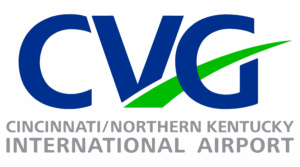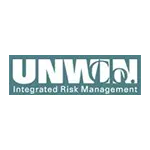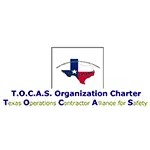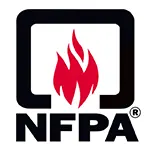Let us help you make sense of PSM / RMP!
My friend Brian Chapin will be offering an open-enrollment PSM/RMP class in Burleson, Texas, July 8th to 11th, 2025. Brian is an absolute pro in NH3 Refrigeration Process Safety. Anyone who attends will also get a FREE membership to SAFTENG. You can get more information on the class with this link.
CLICK HERE to Renew your Membership
CLICK HERE for a NEW Membership
CLICK HERE to see eligibility requirements for FREE Membership
If you have any questions, please contact m
SAFTENG has:
- Over 18,000 categorized unsafe acts/conditions and accident/injury photos
- Over 1,500 ppt's & doc's in the SAFTENG Library
- Over 4,000 Technical Articles on Process Safety, Emergency Response & OSH topics
- Over 450 videos (those not allowed on YouTube Channel)
Many THANKS to my NEW Members and those who CONTINUE to support SAFTENG:














December 26, 2023
The proposed rule would require Workplace Emergency Response Employers (WEREs) and Emergency Service Organizations (ESOs) to develop and implement a written comprehensive risk management plan based on the type and level of service(s) that would be established: Paragraph (c) Organization of the WERT, and Establishment of the ERP and Emergency Service(s) Capability and Paragraph (d) ESO Establishment...
Read More
December 26, 2023
To be effective, any safety and health program needs the meaningful participation of workers and their representatives. Similarly, for the Emergency Response Program (ERP) to be effective, team members and responders need to be involved in establishing, operating, evaluating, and improving the ERP. Team members and responders have much to gain from a successful program and the most to lose if the program...
Read More
December 24, 2023
Workplace Emergency Response Employers (WEREs) and Emergency Services Organizations (ESOs) respond to a wide variety of incidents, most of which are considered routine and involve a small commitment of resources. Some incidents are more complex and involve larger commitments of resources and potentially higher-risk operations. The WERE and ESO need to develop an incident management system (IMS) that...
Read More
December 24, 2023
The use of Standard Operating Procedures (SOPs) helps to reduce the risk of injuries and fatalities by providing written guidance to team members and responders with established safe procedures for actions to be taken during a wide variety of incident responses. They provide direction for team members and responders on what they need to do to safely perform job tasks that are routine and predictable....
Read More
December 24, 2023
This is a long time coming. OSHA referenced the use of EPCRA’s Tier II’s in this section; something that has been in place since 1986! For those of you who have stressed over my lengthy and detailed PSM/RMP audit findings regarding emergency planning and response – you’re welcome. Closing out those findings means you are well on your way to being compliant...
Read More
December 23, 2023
During emergency incident operations, team members and responders face the most challenging aspects, both physically and psychologically, of their vocation.Ensuring safe operations at incidents can reduce team member and responder injuries and fatalities and limit exposure to health hazards. Paragraph (p) of the proposed rule is based on current industry practices, as reflected by NFPA consensus standards...
Read More
December 22, 2023
Proposed paragraph (i) provides requirements to ensure that Workplace Emergency Response Employers (WEREs) facilities are safe for team members. Paragraph (i)(1)(i) of the proposed rule would require WEREs to ensure their facilities comply with 29 CFR 1910 Subpart E, Exit Routes and Emergency Planning. This proposed provision is not a new requirement because WEREs are already required to comply...
Read More
December 22, 2023
As noted in the Summary and Explanation for proposed paragraph (a) Scope, the proposed rule would not apply to any employer that is not an Emergency Service Organization (ESO) and does not have a Workplace Emergency Response Team (WERT). Nothing in this proposed rule would require an employer to establish a WERT. Each employer makes the decision for itself, based on a risk assessment of its facility,...
Read More
December 20, 2023
In the world of hazardous materials, evacuating them from their primary (and secondary) containment system plays a KEY role in performing maintenance/servicing on the system SAFELY. For example, opening a process/system that contains hazardous materials FIRST has to be evacuated of that hazardous material, and this evacuation to a “safe place” should be done through a Manual “Spring-Loaded-CLOSED”...
Read More
December 20, 2023
EPA and OSHA put out an Alert in 2007 regarding the use of Excess Flow Valves (EFV) as a “safeguard”. Although that alert has been “archived” the failures we see today align with what that alert warned us about 16 years ago! While excess flow valves (EFV) are in extensive service and have prevented numerous pipe or hose breaks from becoming much more serious incidents,...
Read More
December 20, 2023
SAFETY ALERT From National Propane Gas Association (NPGA) INTRODUCTION: Readers of this bulletin should consult the law of their individual jurisdictions for codes, standards and legal requirements applicable to them. This bulletin merely suggests methods which the reader may find useful in implementing applicable codes, standards and legal requirements. This material is not intended nor should it...
Read More
December 20, 2023
While wrapping up a 2023 project, I was saddened to see the image below while in the OSHA incident database. Several things come to mind regarding these H2S incidents: 1) no other chemical in the database has this deadly percentage over the past three (3) years 2) Hydrogen Sulfide has GREAT warning properties (odor threshold 0.008 to 0.1 ppm), but with that also comes Olfactory Fatigue (@ 100...
Read More
















